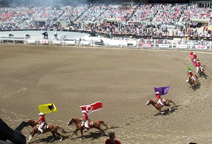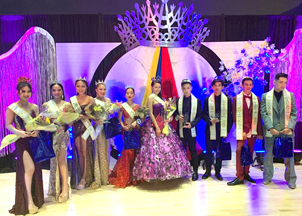- News Front Page
- Uncategorized
- Headline News
- Filipino Calgarian
- Business
- Pinoy Stories
- Community News
- Publisher's Note
- The Main Ingredient
- Views and Opinions
- Maikling Kwento
- Alberta News
- OFW – Month
- Travel News
- Health and Lifestyle
- Pinoy Toons
- Pinoy Spirit
- Entertainment
- The Philippine Lawyer
- Horoscope
- Greetings
- Editorial
- About Us
- Greetings From the Prime Minister
- Greetings from the President of the Philippines
- Greetings from the Premier of Alberta
- Greetings from the Mayor of Calgary
- Advertise With Us
- Disclaimer
- Subscription
Publisher's Note
- Publisher’s Note
Dear readers, The summer is going fast as everyone is having fun especially that we just wrapped up the festivities of the 10 days Calgary Stampede. The weather cooperated in a way where it showered during the parade but it all went well. I’m sure that the organizers of Calgary Stampede were all happy with an [...]
Visitors to Pinoytimes
Page added on March 20, 2016
Kidney Stones
What are kidney stones?
Kidney stones are made of salts and minerals in the urine that stick together to form small “pebbles.” They can be as small as grains of sand or as large as golf balls. They may stay in your kidneys or travel out of your body through the urinary tract. The urinary tract is the system that makes urine and carries it out of your body. It is made up of the kidneys, the tubes that connect the kidneys to the bladder (the ureters), the bladder, and the tube that leads from the bladder out of the body (the urethra).
When a stone travels through a ureter, it usually causes pain and other symptoms.
What causes kidney stones?
Kidney stones form when a change occurs in the normal balance of water, salts, minerals, and other things found in urine. The most common cause of kidney stones is not drinking enough water. Try to drink enough water, enough so that your urine is light yellow or clear like water (about 8 to 10 glasses a day). Some people are more likely to get kidney stones because of a medical condition, such as gout.
Kidney stones may also be an inherited disease. If other people in your family have had kidney stones, you may have them too.
What are the symptoms?
Kidney stones often cause no pain while they are in the kidneys. But they can cause sudden, severe pain as they travel from the kidneys to the bladder.
Call a doctor right away if you think you have kidney stones. Watch for severe pain in your side, belly, or groin or for urine that looks pink or red. You may also feel sick to your stomach (nausea) and may vomit.
How are kidney stones diagnosed?
You may first find out that you have kidney stones when you see your doctor or go to an emergency room with pain in your belly or side. Your doctor will ask you questions about your pain and lifestyle. He or she will examine you and may do imaging tests such as a CT scan or an ultrasound to look at your kidneys and urinary tract.
You may need more tests if you have more than one stone or have a family history of stones. To find out the cause of your kidney stones, your doctor may order a blood test and ask you to collect your urine for 24 hours. This can help your doctor find out if you are likely to have more stones in the future.
Kidney stones may not cause any pain. If this is the case, you may learn you have them when your doctor finds them during a test for another disease.
How are they treated?
For most stones, your doctor will suggest that you take care of yourself at home. You may need to take pain medicine. You’ll need to drink enough water and other fluids so you don’t get dehydrated. Your doctor may give you a medicine to help the stone pass.
If a stone is too large to pass on its own, or if it gets stuck in the urinary tract, you may need more treatment.
The most common treatment is extracorporeal shock wave lithotripsy (ESWL). ESWL uses shock waves to break a kidney stone into small pieces. The bits can pass out of your body in your urine. Other times, a doctor will need to remove the stone or place a small flexible plastic tube (called a stent) in the ureter to keep it open while stones pass.
How can you prevent kidney stones?
After you have had kidney stones, you are more likely to have them again. You can help prevent them by drinking plenty of water, enough so that your urine is light yellow or clear like water, about 8 to 10 glasses of water a day. You may have to eat less of certain foods. Your doctor may also give you medicine that helps prevent stones from forming.
KIDNEY STONES: PREVENTING KIDNEY STONES THROUGH DIET
Introduction
If you have kidney stones, your doctor or dietitian may talk with you about an eating plan to help prevent new stones. The most common types of kidney stones are calcium and oxalate. Each type may require a different eating plan. There are certain foods you can have, and other foods you should avoid, to reduce the chance that you will get kidney stones again.
- If you had kidney stones before, you are more likely to get them again. But by following the eating plan your doctor or dietitian suggests, you may prevent new kidney stones.
- Drink plenty of water. The most common cause of kidney stones is not drinking enough fluids, especially water.
How can you prevent kidney stones?
The following tips may lower your chance of getting kidney stones:
- The most important thing you can do is drink more fluids, especially water if your doctor says it is okay. Try to drink 8 to 10 glasses of water a day. If you don’t already drink that much, slowly increase how much you drink. For example, add one more glass of water each day until you are drinking 8 to 10 glasses a day. This slow increase will give your body time to adjust to the extra fluids. You are drinking enough water when your urine is clear or light yellow. If it is dark yellow, you are not drinking enough fluids.
- If you had a calcium kidney stone, it may help to:
- Eat less salt and salty foods. One way to do this is to avoid processed foods and limit how often you eat at restaurants.
- Talk to your doctor or dietitian about how much calcium you need every day. Try to get your calcium from food, rather than from supplements. Milk, cheese, and yogurt are all good sources of calcium.
- If you had an oxalate kidney stone, your doctor may ask you to limit certain foods that have a lot of oxalate, such as dark green vegetables, nuts, and chocolate. You don’t have to give up these foods, just eat or drink less of them.
If you have had kidney stones in the past, it may also help to:
- Eat a balanced diet that is not too high in animal protein. This includes beef, chicken, pork, fish, and eggs. These foods contain a lot of protein, and too much protein may lead to kidney stones. You don’t have to give up these foods. Talk to your doctor or dietitian about how much protein you need and the best way to get it.
- Increase how much fibre you eat. Fibre includes oat bran, beans, whole wheat breads, wheat cereals, cabbage, and carrots.
- Avoid grapefruit juice.
- Drink lemonade made from real lemons (not lemon flavouring). It is high in citrate, which may help prevent kidney stones.
- Talk to your doctor if you take vitamins or supplements. He or she may want you to limit how much fish liver oil or calcium supplements you take. Also, do not take more than the recommended daily dose of vitamins C and D.
For 24/7 nurse advice and general health information call health Link at 8-1-1.
Source: www. myhealth.alberta.ca
Translated with permission from Healthwise Inc.© and is not intended to replace the advice of care you get from your provider or other healthcare professional. Always consult your health professional for medical diagnosis and treatment.
Alberta Health Services offer Alberta Healthy Living Program, which include patient education, disease specific and healthy lifestyle education, supervised exercise programs and self-management workshops in English, Cantonese, Mandarin, Hindi and Punjabi. For more information please go to www.albertahealthservices.ca/cdmcalgaryzone.asp or call 403-943-2584 (English), 403-955-6857 (Cantonese and Mandarin) and 403-955-6856 (Hindi and Punjabi).
RELATED STORIES
LATEST HEADLINES
- NEW CONSUL GENERAL ZALDY PATRON ASSUMES POST IN CALGARY
- 121st Independence Day with the Philippine Consulate of Alberta and Saskatchewan
- Philippine Heritage Month: Minister Aheer
- Delivering Value for Citizens – The City of Calgary’s 2018 Annual Report is now available
- Reunited Families Attend Reunification Workshop
COMMUNITY NEWS
 The Greatest Outdoor Show…Calgary Stampede
The Greatest Outdoor Show…Calgary Stampede Mr. and Ms. Pilipinas Canada Independence 2019
Mr. and Ms. Pilipinas Canada Independence 2019 Canada to empower visible minority newcomer women
Canada to empower visible minority newcomer women Interim Pathway for Caregivers sa Canada Bukas na Ngayon
Interim Pathway for Caregivers sa Canada Bukas na NgayonPINOY STORIES
 Cubao to Makati in 5 minutes by December
Cubao to Makati in 5 minutes by December- Holy Week practices in the Philippines
PINOY SPIRIT
HAVE YOUR SAY
Lorem ipsum dolor sit amet, consectetur adipiscing elit, dolor sit ipsum.PROMOTIONAL BLOCK
Lorem ipsum dolor sit amet, consectetur adipiscing elit, dolor sit ipsum.TRAVEL NEWS
PINOY TOONS
Tags
Archives













